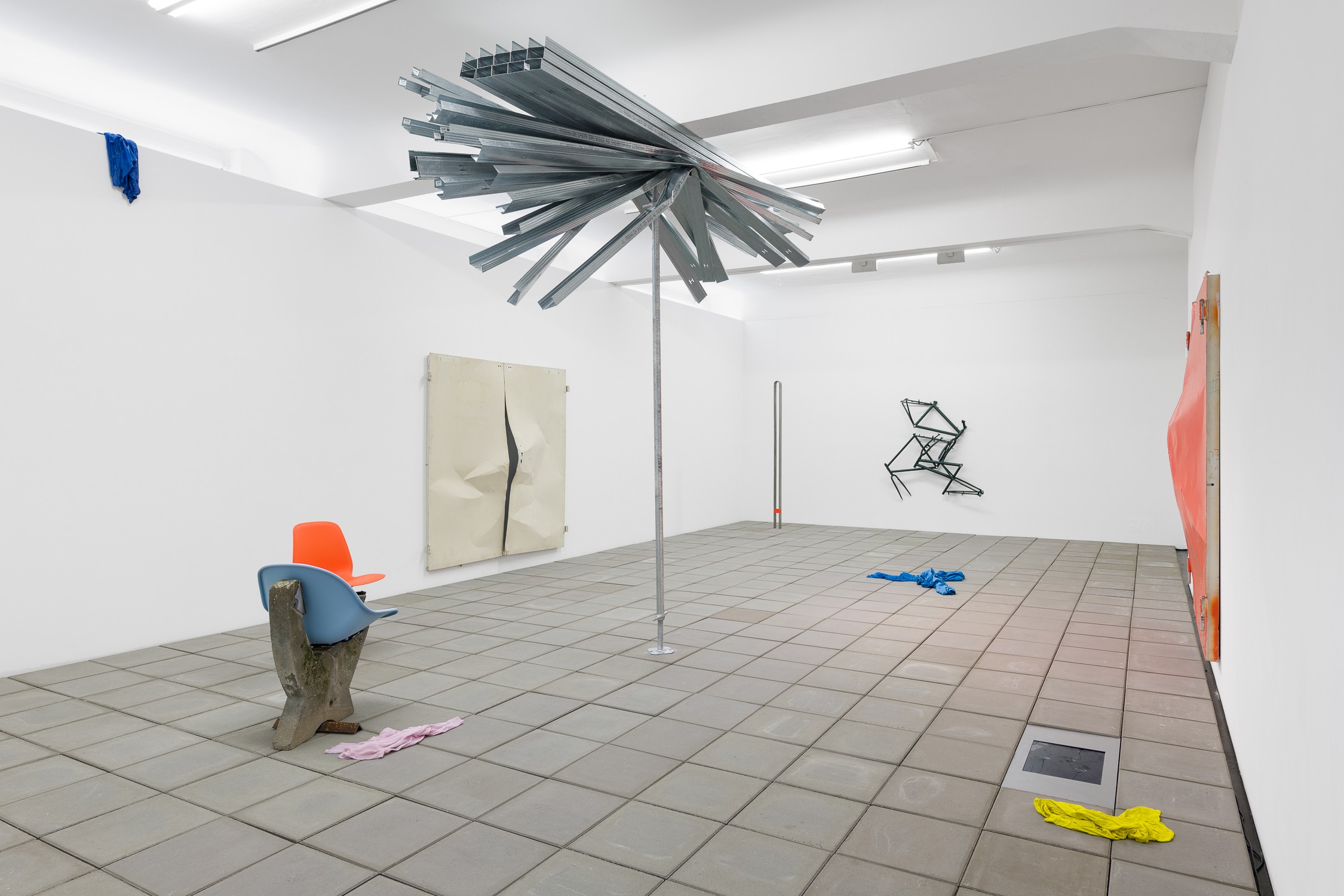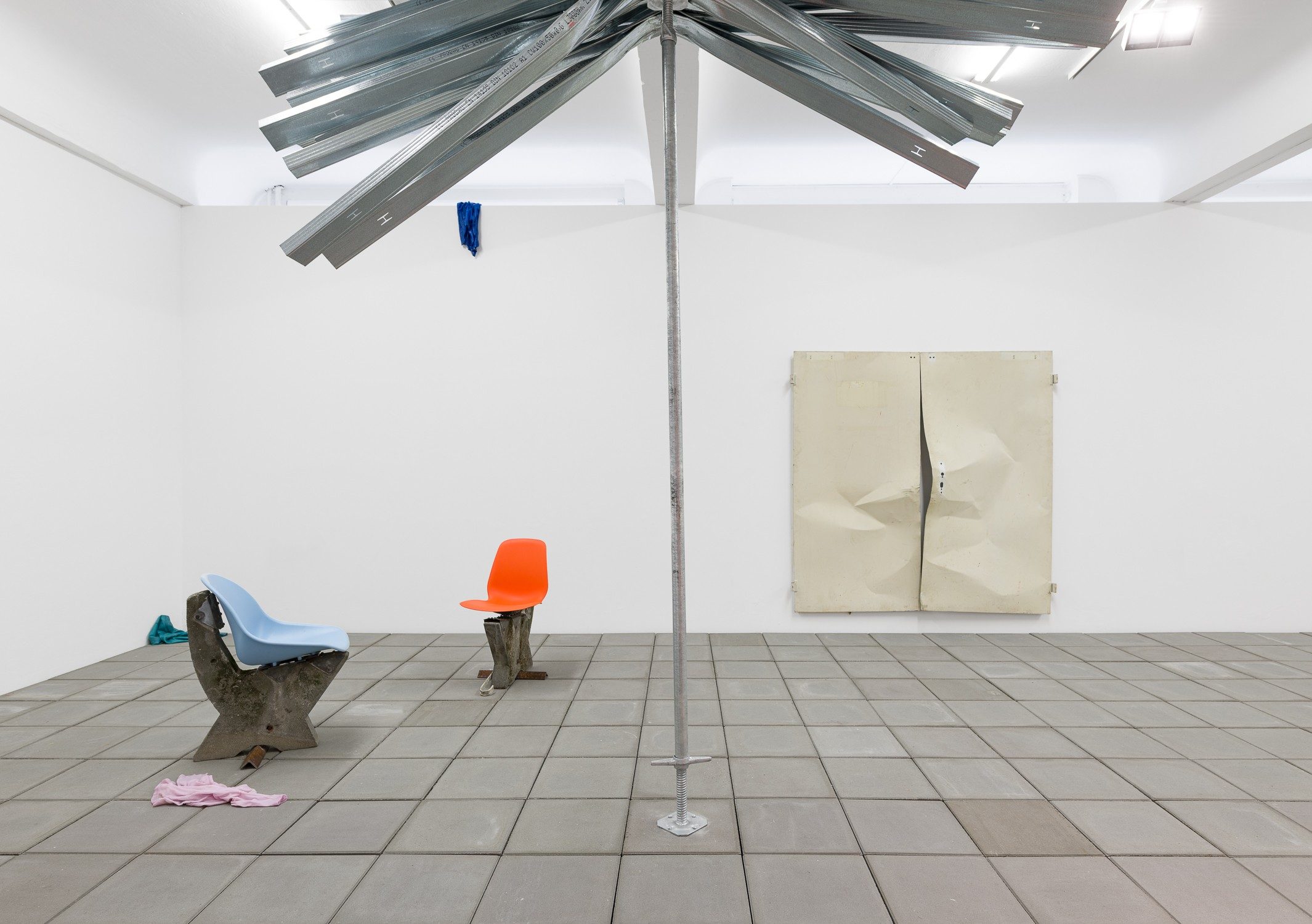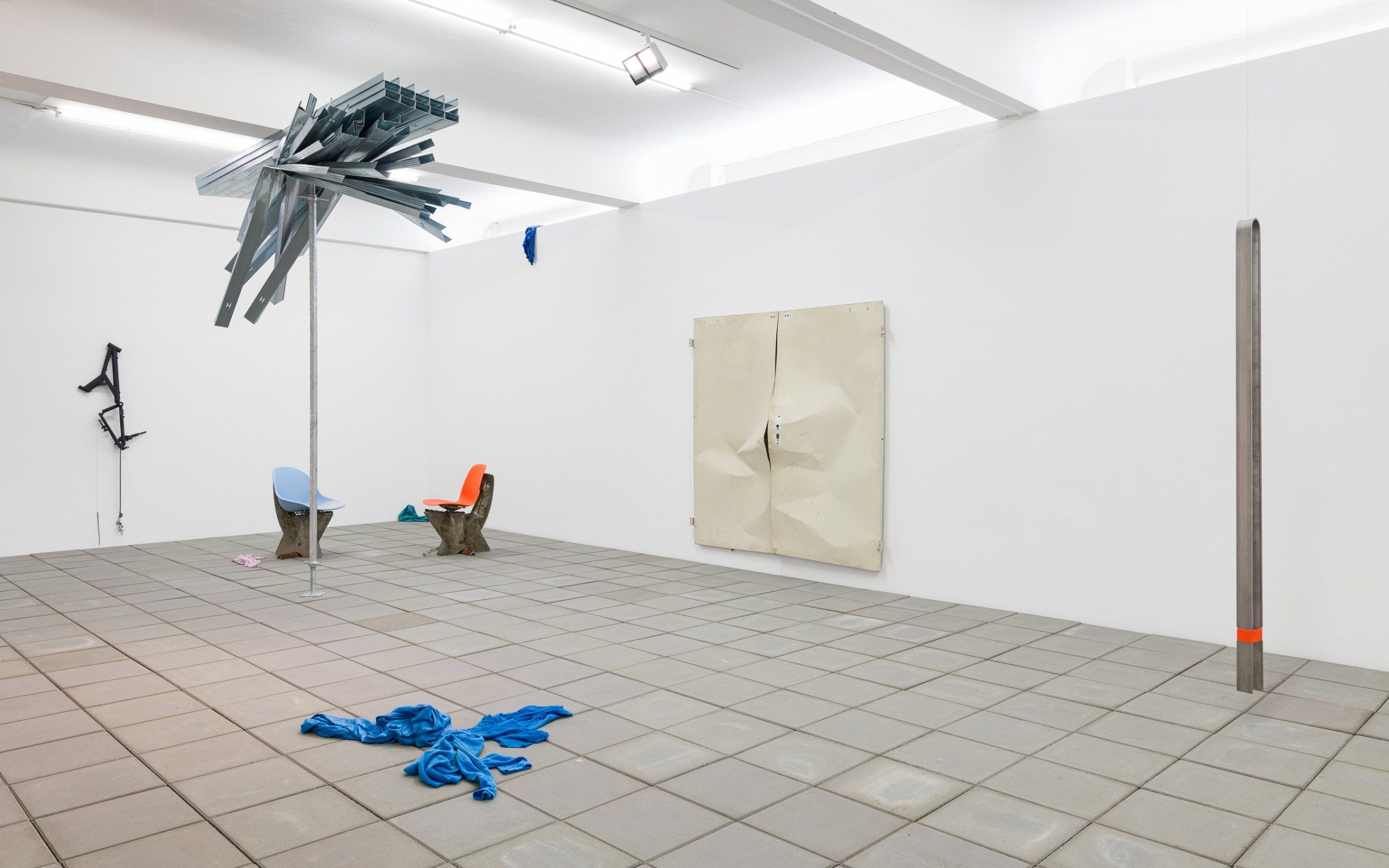





With Felix Kiessling, destruction, breakage and bending are very elegant matters. His working process for Taumel (Tumble) is controlled destruction or: aesthetic vandalism. Aesthetics based on beauty are often too simple. But when ugly beauty is the result of forceful damage, its aesthetic almost borders on the sublime, on a post-vandalism elegance. The bicycles are bent out of shape, metal doors dented, iron springs strained. The floor shakes. “I let myself go”, states Felix Kiessling.
Kiessling is known for his conceptual art, often in the form of land art, video works, light and spatial installations. Up till now, he built up; now, he tears down. “Accident images” interest him. And because he is working with objects and not living beings, the results can be aestheticised and enjoyed. Perhaps the bikes were already damaged when he got them. He went further, sawing them up, bending and painting them. The accident was replicated in the studio and artificially dramatised – the catharsis lays in the reconciliation with the work. The monochrome-painted bike-objects sometimes exemplify gestural compositions, sometimes a cooler classicism. Others resemble insects who have died a sacrificial death. Here, reconciliation means the aesthetics that are not a product of chance but a statement for a clear language of form.
The use of deconstruction as a creative act expanded from modernist painting, such as Cubism, through the post-war period into all artistic media. In his Cuttings, Gordon Matta-Clark destroyed house facades, filmed his actions as performances and photographed them as spatial installations. The master of aesthetic destruction Matthew Barney not only creates accidents but also staged a collision ballet in Cremaster 3. The choreography took place in the Chrysler building; the cars driving into each other moved in a poetic process of taking shape. Felix Kiessling’s Taumel works fit here. Friction and force produce the artist’s victorious damage report.
A curved spring held together with straps stands in the middle of the room. It has an unnatural pose. Usually, it would behave differently to the room. Without the straps shaping it, it would merely be an innocuous ready-made. The threat (of springing free) is simultaneously its transformation from a passive item to an active object. Kiessling conserves physical forces spatially and under pressure.
The fire doors arch towards the observer. They, too, show the conservation of past violence in its convex form. But if only the present exists, that this is not about a specimen, spook must come under suspicion. For outsiders, spook is logical in its innermost being, that is in its convex expanding, but chaotic. Spook is a joker, a physical force that establishes receptive chains of causation.
There is also a palm tree. It is made from a scaffolding spindle that pushes drywall profiles up against the ceiling. Its existence demonstrates the previously unseen tension between the floor and ceiling. The White Cube thus also becomes a pressure-giving space of opposing poles.
In between lay thrown-away trekking suits, as if made of stone. The careless or even sad moment of this human movement was frozen in time. The textiles look forgotten. Major city – an adventure playground for some, an investment pit for others, and a fight for survival for the other others. “To bring the ugly, the broken, the real into the gallery space is not an institutional critique; it is no rejectionist attitude. I just want to bring reality, the here and now to the gallery space,” emphasises Kiessling. The industrial, urban ambience in the exhibition allows no room for a sense of well-being. Kiessling damages not only the objects as such but also the security of mass production, the reassurance of symmetry and the trust in materials.
Finally, the landscape stands on paving stones. In the outside space, their task is to protect bordering green areas from beaten paths or keep passers-by close to the ice cream parlours. In the exhibition, they make movement more difficult. Wobbly stones hamper strolling and make walking a conscious act. The tension, which also accounts for the formal force of the object, develops in the visitor when their muscles reflexively react to the unstable surface. Taumel is thereby not only an exhibition landscape with various individual works, but it is also a spatial installation as a draft of a world that, with its particular events of physical force and chronic vandalism, creates and conveys poles of tension.
Larissa Kikol